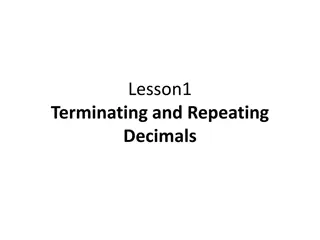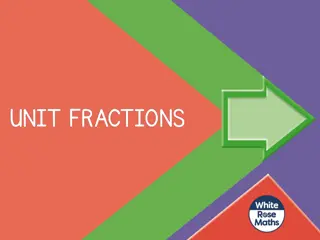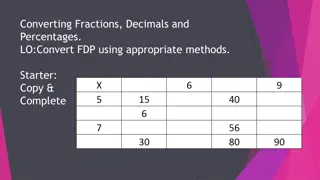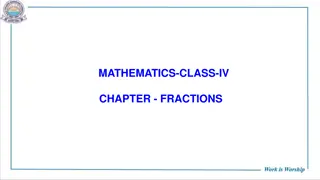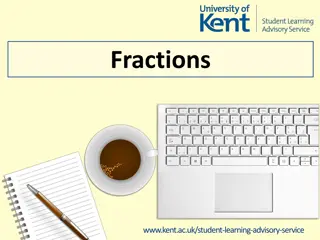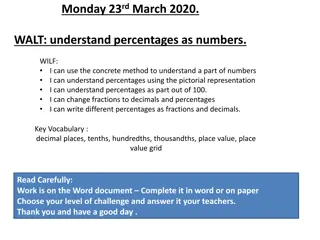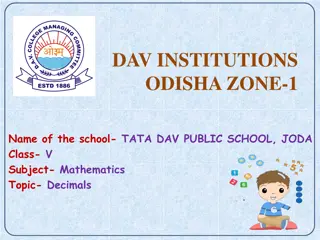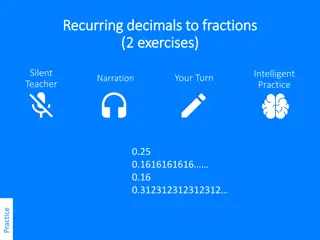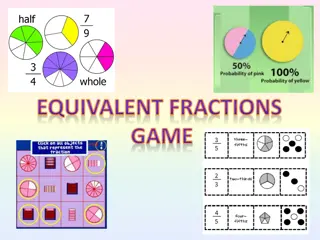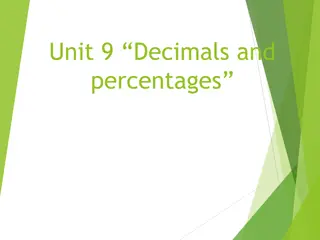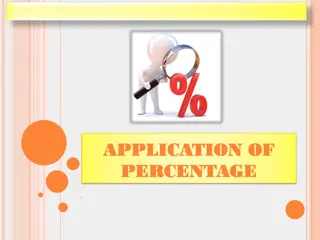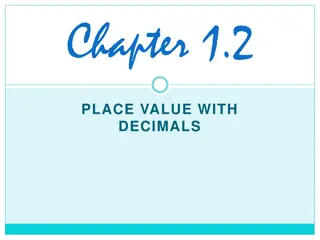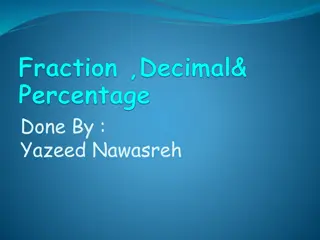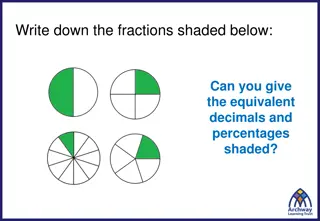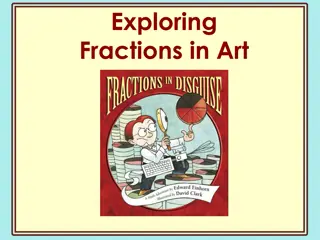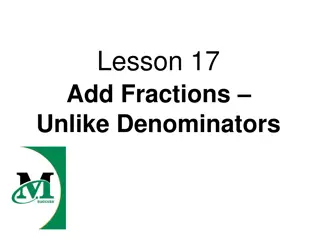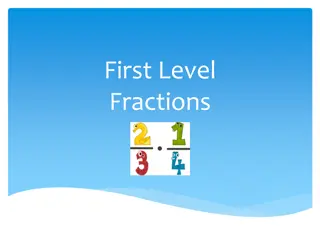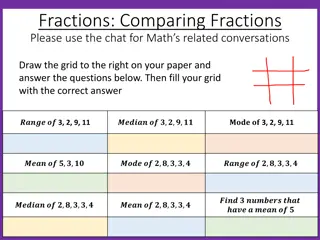Understanding Fractions, Decimals, and Percentages in Math
Discover the key concepts related to fractions, decimals, and percentages in math, including adding, subtracting, converting, and calculating percentages. Dive into topics such as finding common denominators, operations with fractions, converting between fractions and decimals, and more with worked examples and practice questions. Strengthen your math skills and build a solid foundation in this essential area of mathematics.
Download Presentation

Please find below an Image/Link to download the presentation.
The content on the website is provided AS IS for your information and personal use only. It may not be sold, licensed, or shared on other websites without obtaining consent from the author. Download presentation by click this link. If you encounter any issues during the download, it is possible that the publisher has removed the file from their server.
E N D
Presentation Transcript
DNA Ask a question, make a statement
Adding & Subtracting Fractions: Different Adding & Subtracting Fractions: Different Denominators Denominators Unit 4D2
Unit 5 - Fractions, Decimals and Percentages Prior learning: Place value. Percentage as an amount out of 100. Multiplication and division. Ordering integers on a number line. Shading fractions of diagrams, equivalence and simplification of fractions. 57-59,61 Convert between improper fractions and mixed numbers. 63-64 65-66, 67-70 Four operations with mixed and improper fractions. 60 Order fractions. Find fractions of an amount. 77 Calculate a percentage of an amount and percentage change. 84-90 Convert between fractions, decimals and percentages and compare them. 73-76, 82-83 93-94 Calculate simple and compound interest. Next steps: Calculating proportions of pie charts. Using multipliers. Reverse percentages. Reverse fractions.
What is the denominator? What do I mean by a common denominator?
Addition: Worked Example Your Turn 2 5 +1 2 3+1 3 5
1 7+2 3 4+2 5 3 2 5+1 3 4+2 7 5 2 5+2 40 +2 3 7 5 2 5+2 3 4+3 3 5 1 4+2 3 4+ 6 10 3
1 7+2 5=19 3 4+2 3=17 12= 15 35 12 2 5+1 7=19 3 4+2 5=23 20= 13 35 20 2 5+2 24 35 40 +2 3 5=11 7= 40 2 5+2 16 15= 11 3 4+3 5=27 20= 17 3= 15 20 1 4+2 3=11 3 4+ 6 10= 27 20= 17 12 20
Subtraction: Worked Example Your Turn 2 3 1 2 5 1 5 3
2 5 1 1. 2 3 3 7 6. 4 1 7 2 2. 3 4 2 7. 5 3 2 5 2 3. 3 4 2 30 8. 7 2 3 2 4. 3 4 3 5 9. 5 2 3 1 5. 3 4 9 15 10. 4
2 3 3 4= 1 2 5 1 9 35 6. 1. 7= 12 3 4 2 1 1 7 2 5= 9 7. 3= 2. 12 35 3 4 2 30= 41 60 2 5 2 4 35 8. 3. 7= 3 4 3 3 2 3 2 4 15 5= 9. 4. 5= 20 3 4 9 15= 3 20 2 3 1 5 12 10. 5. 4=
Can you use today and last lesson to do this exam question: 2 3 4 5
Demonstrate 1. 1 4 + 3 12 2. a) 2 b) 3 3. Jack runs 3 they run more than 2km? 3 + 3 15 4 -2 5 5 of a km. Alex runs 3 4 of a km. Did
Connect Calculate 2 3 - 3 15 Luke walks ? Ryan then walks ? km. Did they complete more than 1km? ? of a km. ? of a 3 4 -2 1 8 + 3 12 5 Jack eats ? Louise eats ? How much of the cake did they eat? ? of a cake. ? of a km. 1 6 + 3 4 Which is larger. ? ? or ? ??







